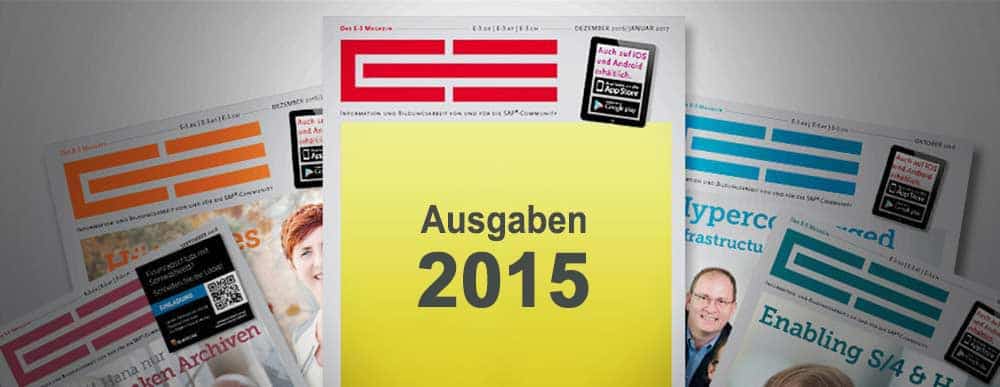Why S/4 add-ons?


SAP partners are following the development of S/4 Hana very closely. In doing so, they check whether existing partner solutions can be connected. In this context, a team of six installed the S/4 product in a virtual environment as soon as it was available and adapted its own SAP-certified interface to SAP ERP to S/4.
For the subsequent test, two small, complex production logistics models (MM, PP-PI, SD) were built after basic customizing. The interface was syntactically tested and adapted.
Finally, the adapted interface was imported via transport request and the interaction of the existing add-ons with S/4 was tested for the needs of the pilot in terms of content (read, externally create new and write changed objects).
A complete content test of the objects that have not yet been tested in terms of content will be carried out step by step when testing further scenarios. The tasks were completed within three weeks.
Previous experience with S/4 with added planning solutions shows that in the on-premise edition much is comparable with SAP ERP. Of 52 SAP objects relevant for the production logistics applications described below and others, only sales orders and deliveries have had to be revised so far.
The performance is noticeably higher than with SAP ERP. SAP's partners have provided extensions to SAP products over many years. Often these are extensive solutions in C++ and other languages, which have been developed in a number of cases with an effort of several hundreds of processing years.
The basic structure of such solutions usually consists of reading out the required SAP objects via certified interfaces, modifying them algorithmically and manually in a separate application server, creating new objects and then writing modified and new objects back as SAP objects.
For the team of authors it was gratifying that for S/4 the add-ons developed and tested over many years for SAP ERP and SCM/PP-DS are still usable at least for S/4 on premise.
This gives you the opportunity to provide highly specialized solutions very quickly. Time is gained to gradually make these solutions available for the cloud as well. In the concrete case, the extended planning board as well as planning folders and dynamic pegging have been tested in interaction with S/4 so far.
Advanced planning board
An extended planning board serves as a graphical operating, simulation and planning interface to S/4. Finit planned multi-level production orders can be created from planned orders.
These production orders can be moved by drag-and-drop as a whole or by observing the relationships in the Gantt chart. The production orders that have been created from planned orders by "converting" are automatically finitely scheduled if required.
Groups of production orders can be moved together as campaigns, sequences are optimized. In SIM mode, trial scheduling can be performed, step-by-step rollback is possible.
In SAP mode, on the other hand, every change to an object on the graphical user interface triggers a transaction in S/4 that updates the production model. At the same time, the material requirements and inventory list is displayed as a histogram.
During scheduling, it can be selected whether material availability is taken into account or not. ATP conflicts (material quantities not or only partially available) are displayed in the associated production order tables, shelf-life violations are indicated or algorithmically avoided.
Alternative resources can be selected automatically during scheduling (backtracking). No production versions have to be maintained for this purpose.
Planning folders and dynamic pegging
From an extended planning board, one can automatically derive hierarchical planning folders for rough-cut planning with the existing detailed planning model. In these planning folders, requirements, dependent requirements, production quantities, capacity utilization and stocks are displayed on a daily/weekly basis across the entire logistics chain.
In the background, material requirements and stock lists and resource allocation lists are discretized for this purpose, so that no separate data structures are needed for rough-cut planning, but production orders are simply displayed differently.
If you change production quantities in the cells of the planning folder, the other cells along the logistics chain are automatically updated via static or dynamic pegging.
In the process, time is converted into units in available capacity/capacity utilization on a customer-related basis and displayed. If overloads are detected in a stage, these overloads are counteracted using three methods.
One can increase the available capacity, one can postpone disruptive production orders or one can choose alternative production versions. The latter two options are comparable to "driving a dent in a sheet with a mallet", but they are still effective.
In contrast to similarly structured Excel solutions, the advantage here is the direct connection to S/4. The planning folder thus also serves as an operating and interpretation interface to SAP.
The composition of the rows for such planning folders can be fixed or dynamic. In the case of dynamic composition, pegging is used in which, starting from a material, all the resources and materials are displayed as rows of a planning folder that are contained in the pegging tree.
This results in particular in the possibility of creating CTP solutions. The functionalities briefly described here are in use as SAP ERP add-ons at around 80 corporate groups and large medium-sized customers in various forms and now also work correctly with S/4.
Classification and outlook
Production logistics is a core competence of SAP. A large part of the above-mentioned functionalities will be provided by SAP step by step in the future. How useful it is to temporarily establish partner solutions for production planning in connection with an S/4 implementation will probably have to be decided on a project-by-project basis.
However, the authors' experience over the past 20 years shows that there are always a number of tasks to be solved that are so complex that they are difficult to represent in a standard product.
Examples include such tasks as network/campaign planning, semi-continuous planning, joint production planning, container management and tank planning. It seems interesting to create solutions where objects from several modules are merged and algorithmically linked.
This provides solutions for simultaneous laboratory and production planning (PP-PI + QM), simultaneous project and production planning (PS + PP), simultaneous maintenance and production planning (PP+PM) and integration of process-oriented into parts-oriented planning [hardening shops, foundries] (PP + PP-PI).
Furthermore, many users would like to see the mapping of complex planning processes (e.g. allocation of batches to production orders [including mix optimization], cross-plant CTP including cut optimization).
For these reasons, the technology of reading a production logistics model from S/4 and using it there for optimizations, planning and simulations will remain interesting.





